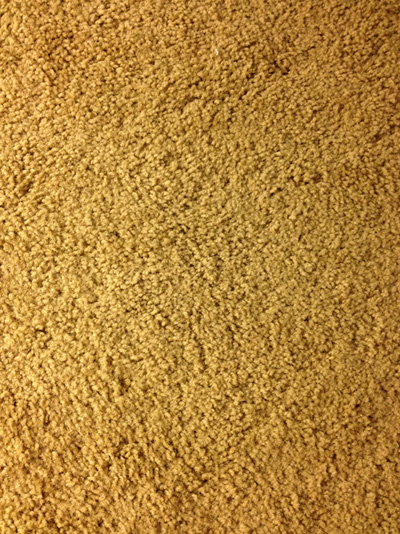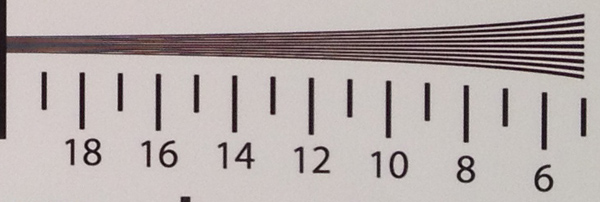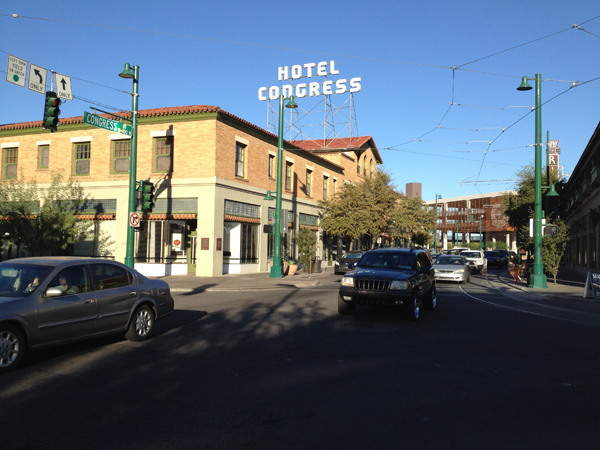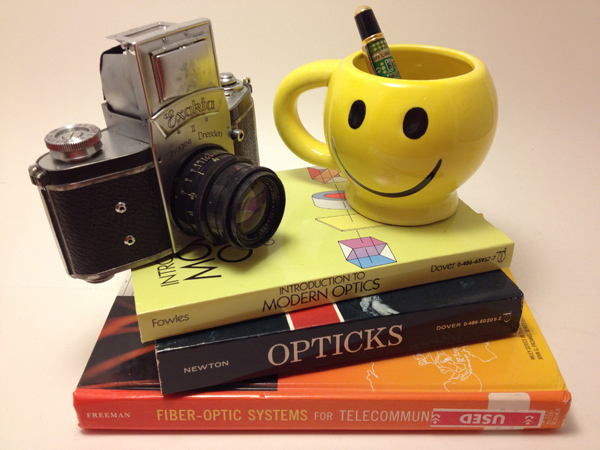Apple iPhone 4S: Thoroughly Reviewed
by Anand Lal Shimpi & Brian Klug on October 31, 2011 7:45 PM EST- Posted in
- Smartphones
- Apple
- Mobile
- iPhone
- iPhone 4S
Camera Quality
So we’ve gone over the details of improvements on the sensor, optical system, and finally ISP, and now the question is what this translates to in terms of actual image quality. To get to the bottom of this, we’ve turned to our usual smartphone camera bench locations and taken photos with the iPhone 4S at those locales. In addition I’ve taken photos with the 4S in our light box test with the lights on and off.
Anand mentioned that the smartphone battery life test needs some tweaking, the same also applies to the smartphone camera bench. To that end, we’re doing a few new things here in addition to the same old stuff. I recently started taking video samples side by side with the device under test alongside another reference camera - we’re going to start doing that more for stills now as well, and I’ve done this with the 4S alongside the 4 and an SGS2. I’ve always felt that our photo tests could be a lot more rigorous, and we will be coming up with some much more objective tests, but for now I have a preview with three new controlled tests. These sample photos are taken in another smartphone camera mount on a tripod 1.5 feet away from a test target. If we were being really scientific we’d be using an optical track and such, this is just a tripod with the phone on top some distance away. The goal is to have some objective testing, some subjective/qualitative testing.
The first is a distortion grid which is pretty straightforward. We’re all familiar with distortion, which is a strongly field dependent magnification error. Put another way, rays at different field angles get different magnifications, and the result is either barrel or pincushion. It’s actually easy to qualitate how much distortion there is present based on a sample like this, which we’ll do in the future. In addition, it’s also possible to correct out distortion computationally.
The 4S subjectively has much less distortion than the 4, though both appear to have some barrel going on. Interestingly enough you can immediately tell that the 4S and 4 have close to the same field of view, with the 4S being just a tad wider. The SGS2’s wide field of view becomes readily apparent as well in the fourth image, and it suffers from a non-negligible amount of barrel distortion. I tossed in the other android handsets I have on hand as well as the 3GS to show how far things have come.
Another noteworthy thing is that the 4S minimizes but doesn’t entirely eliminate the colored spot in the center. The 4 had an incredibly distinctive green spot in the center that was so notable you could spot images online and instantly tell they came from an iPhone 4. You can see a magenta circle in the 4’s sample, but it’s a bit harder to detect on the 4S image. It’s an aberration that crops up whenever you’re not looking for it, but seems to elude me when I try and track it down. Oddly enough I managed to find it in my carpet, where the 4S has no such green circle, but the 4 does. We talked earlier about the improved IR filter possibly mitigating this issue, and that does seem to be the case somewhat.

| iPhone 4S | iPhone 4 |
Apple spent a lot of time in the keynote discussing their auto white balance functionality in the H4 ISP - the question is how well does it stack up? Onward on to our next test, which is a GMB/Xrite color checker classic card and the Kodak color control patches. I took a reference image with my D300s and configured white balance manually using an 18% grey card for comparison purposes, and then samples with the same phones again.
It’s interesting that the iPhone images have been getting less saturated with each generation. The 4 image looks absurdly oversaturated and almost cartoonish compared to either the reference, the 4S, or the SGS2. I’d say that the SGS2 and 4S are pretty much tied here and look close to but not exactly in line with the reference. Going down the line you can see some of the other vendors have a long ways to go with their own white balance.
The third new test for right now is an industry standard ISO 12233 chart test. I see a lot of people taking pictures of this, but then offer little interpretation of the results. There are a bunch of different components in this chart - the thick 30 degree lines are for use with very popular slant MTF analysis algorithms, there are some patterns for distortion computation, and finally line pairs with ever increasing spatial frequency. Analyzing these requires looking at the full size samples, then finding the point at which the contrast between line pairs goes to zero - essentially, the point where you can’t visually distinguish the pattern from irresolvable grey - in both vertical and horizontal. The numbers on the chart simply correspond to hundreds of line widths per picture height.
The gallery images of the full size charts are good but to really make conclusions you need to look at size crops of those tangential and saggital frequency regions. These are all taken with the same illumination, unfortunately the huge differences in white balance between cameras are just a reflection on how far the industry needs to go.
The difference between the frequency response of the 4S and the 4 is pretty huge. The disclaimer before you run into all of this data and start analyzing is that choosing the cutoff frequency is something of a science in and of itself (especially because there’s a contrast reversal that tricks people up), plus unfortunately all smartphone cameras export lossy compressed images (JPEGs) and not raw data, and there’s all kinds of sharpening and processing routines at play here. That said, I’d put the 4S cutoff in tangential around 17, and the 4 at 13. I threw the 3GS in as well to show how far things have come in such a short period - that camera barely makes it to 10. The results from the SGS2 put it around 15 or 16, though that camera is doing visible sharpening as evidenced by halos at the edge and an interesting spatial frequency response plot. If you look at contrast between 14 and 16 you can see the 4S narrowly edge out the SGS2 without any sharpening.

| iPhone 4S | iPhone 4 | Galaxy S 2 |
I tossed in images from HDR mode from the 4S and 4 as well. These are made from computationally recombining three differently exposed images stored in a buffer. When you tap the capture button, those last three images get recombined into an image with more dynamic range. Interestingly enough, Apple does some sharpening in HDR Mode - again you can see halos and a big uptick on an SFR plot, but it isn’t subjectively that bad, and we can distinguish lines up to arguably between 17 and 18. In the saggital direction, we can see lines down to about 17.5 on the 4S, 13 on the 4, and around 16 on the SGS2. It’s hard to pick cutoffs when sharpening and nose reduction messes with the image, but clearly the 4S performance is very good. If you want to compare yourself, the original images cropped to tangential and saggital frequency areas is here (2 MB) and the full size charts images are here (19 MB).
Now for the subjective side by sides, which were taken in a bracket holding two smartphones at a time some distance apart horizontally. It’s impossible to take the same exact photo from the same place in space and time, but we’ve done our best to offer a comparison with only a small amount of horizontal shift.

| iPhone 4S | iPhone 4 |
The first 14 test images compare the iPhone 4 to the 4S and are at our test locations downtown, and from a few new angles. Then images 15–19 compare the 4 and 4S HDR performance, followed by 20–24 and 31 which compare the 4 and 4S in low light conditions. Last, 25–30 compare the 4S with the SGS2 which a lot of people have asked for.
The test charts we’ve shown so far tell the story, but seeing real world images makes the difference immediate. The 4S has vastly improved dynamic range over the 4 - you can see many more details in shadows and highlights, thanks in part to increased well depth between the two sensors. The difference between the 4 and 4S white balance is immediately visible as well in sample 4 where the 4S looks more like the actual bridge, and in 7 of a fountain.
In low light tests, the difference is even more dramatic and visible. The neon lit grill sign in 21 on the 4 is something of a blurry mess, while you can actually see the individual tubes in the 4S sample. I also shot a low light test in our light test box, number 31 where you can see a huge difference in noise between the 4S and 4.
The comparison with SGS2 is a little harder to make visually given the difference in field of view between the two. Aligning the two cameras also proved a challenge again thanks to this big difference in field of view, but you can see the effects of Samsung’s sharpening when you look for it. Subjectively, however, the two are quite close.

| iPhone 4S | iPhone 4 | Galaxy S 2 |
I’ve also included the 4S images in our usual lightbox gallery with and without flash, and the normal smartphone camera bench.
I mentioned earlier that I intentionally avoided using the LED flash on the 4, and the same continues with the 4S. If you’re under 2 feet away from the subject, the tiny little fresnel lens on top of the LED flash continues to not be good enough at spreading light around evenly. There’s also a nice bleeding effect that happens on the white model that doesn’t affect the image but just casts a huge weird light pattern on the wall from light bouncing around inside the glass plate. In addition, Apple still doesn’t illuminate the scene when focusing in the dark, so often you’ll entirely miss focus if it’s too dark.
With the lights on inside the box you can see how much better the 4S’ white balance is than the 4, which has an almost red colored background in this test. Oversaturation is also gone, thankfully. I also tossed in images from HDR mode with the lights on. I haven’t touched on it as much but the 4S also shows a big improvement in brightness uniformity with essentially no unwanted vignetting.
The front facing camera on the 4S is unchanged from the 4 (still just VGA), however this offers an interesting opportunity to compare that ISP-enhanced whitebalance. If you look at the sample from the 4S and compare to the 4, the difference is pretty shocking.
To conclude the still image analysis section, we can safely say that Apple has gotten serious about image quality with the 4S. Before the iPhone 4, the iPhone camera largely felt like a commodity cameraphone solution tacked onto otherwise great hardware. With complete control over almost the entire imaging chain on the 4S - custom optics, ISP, and software - we’re starting to see some of Apple’s vertically controlled influence spill over into this arena as well. Nokia has built an incredible reputation for itself by using glass optics and building phones around high performance cameras (like the N8 which is still in a different category entirely), and for the first time we’re starting to see Apple venture into that category as well.


























































199 Comments
View All Comments
ados_cz - Tuesday, November 1, 2011 - link
I have the 4S now and the problem is gone but once my girlfriend comes with her 4, I will make a video and post it to prove you wrong. People have no problems only in areas where signal is really strong. Why would I possibly want to lie?wonderfield - Tuesday, November 1, 2011 - link
What's of concern here is not whether the issue (signal loss) can be demonstrated but whether the phone is, in Brian's/Anand's words, "usable" with the defect or not. It's certainly possible for the GSM iPhone 4 to be rendered unusable in a low signal strength area with a natural, right-handed grip just as it can be rendered unusable with a death grip. That's not to say the phone will be unusable in most scenarios, however, because in most scenarios the phone should function properly. There are certainly edge cases, and the issue is more significant for those who're left-handed and for those who live/work in very poor coverage areas (where it can become an issue), but, again, that's not the typical use case. It's why I categorize Brian's claim that the GSM 4 is not usable without a case as being disingenuous.Realistically, you don't need a "really strong" signal to have not have any problems with the phone, you only need a signal great enough to overcome any attenuation introduced by making contact with the antenna. The extent of the attenuation, as demonstrated in another Anandtech article to which you might refer, is not as significant as portrayed by some media outlets.
ados_cz - Tuesday, November 1, 2011 - link
As far as the need for good signal went I needed to use the case all the time otherwise I would always have to hold the phone in unnatural way. iPhone 4/S is a really beautiful piece of hardware and It was really upseting that I had to use the case and spoil the desing. My close friend living just 15 miles next to me in Perth does not use the case and when he does not care to not to hold the phone in sensitive area, the call drops. It happend to me with him on the phone on few occasions. Few of my friends at uni need to use the case for iPhone 4 as well. The problem was not overstated. Either learn to hold the phone unnaturaly avoiding joining those two critical antenna strips or use a case. I opted for a case. My friend in the London got on well without case, but he learned to hold it by the to when calling. Anyway, I am glad that I have the 4S now and I think my girlfriend does not mind the case on her (former mine) iPhone 4. It so well made piece of hardware and so affordable here in Britain. You are being ripped off in US. Check the deals for iPhones on www.three.co.uk I got mine iPhone 4 for 69 pounds 5 months ago with two years contract for 35 pounds a month (2000 mins any network, 5000 mins mine network, unlimited 3G data with no fairu user policy). I paid 189 pounds for girlfriends (now mine) 4S for 32GB white version just few days ago and she got the same 35 pounds contract.Tetracycloide - Tuesday, November 1, 2011 - link
"I have hundreds of friends who have iPhone 4's who've never had any issue with signal loss at all."Really? Name them. Numbered from one to at least two hundred if you please.
Overstating the strength of your anecdotal evidence doesn't make you look right it makes you look biased.
For what it's worth, I think you're a huge tool for, well, being such a huge tool.
doobydoo - Wednesday, November 2, 2011 - link
Don't be ridiculous.To label someone a 'tool' for stating that their friends don't have issues with signal loss on a phone, is quite frankly ironic.
To suggest I would list my friends names in a bid to convince such a low level individual is even more ridiculous than the rest of your comment (which is a lot).
If you really need hard evidence, I'd point you in the direction of the millions of iPhone customers who gave the iPhone 4 the highest satisfaction ratings of any phone, full stop. Bit hard to imagine that happening if they cant make calls on it, don't you think?
To claim I'm overstating my quite logical claim doesn't make you look right, it makes you look biased.
Tetracycloide - Wednesday, November 2, 2011 - link
I labeled you a tool because your response to another commenter saying they experienced an issue you and 'your friends' never saw was 'your a liar' or more literally "For what it's worth, I don't believe you anyway." That's where you were a tool, that part right there.Your 'hundreds' comment was absurd and you know it. To obtusely pretend I'm actually asking you for a list of names and act like that's absurd (it was obviously rhetorical) is to miss the point which was: you do not actually have 200+ individual examples from 'friends' to draw from. That's absurd.
Your claim was hardly 'logical' it was an absurdly overblown statistic that, even if it was accurate, would still be anecdotal. As are you're 'millions of iPhone customers' by the way. The phone looses signal if held incorrectly. That is the objective reality, full stop.
doobydoo - Friday, December 2, 2011 - link
How ironic that your justification for calling me a tool, is that I essentially disbelieved someone else, after that's all your comments to me are based on.Not only that, but how ridiculous and illogical to say someone is a tool for not believing something. Grow up?
'Hundreds' is not absurd at all, perhaps it sounds absurd to a social recluse? But I can actually name at least 200 friends of mine who use iPhones. Sorry if having friends is a strange concept to you. How dare you claim that you 'do not believe' my 200+ friends claim - that makes you a tool (it's a definition handed down to me by someone special).
Even if my claim was anecdotal, so what? Your criticism of my claim wasn't that it was anecdotal, and I never masqueraded it as anything other than what it was?
The 'MILLIONS' of iPhone customers is not anecdotal at all, by the way - they HAVE factually given the iPhone 4 the best user ratings of any phone of all time. That's reality, fact, pure and simple. They wouldn't do this, if they couldn't make phone calls, don't you agree?
I own an iPhone 4, and it doesn't LOSE (wtf is 'looses') signal in any meaningful way (as in, it never affects call quality or causes calls to be dropped) if held in any way I want. Unbelievable that you make such claims then try to define them as 'objective' - exactly the criticism you levy at me.
gcor - Monday, October 31, 2011 - link
Reading the specs on a lead acid 12v battery I have, I discovered that the higher the load in amps, the lower the total amp hours the battery will output. For example, the spec's say that a particular model can deliver a max of 1 amp hour over 20 hours, but only .5 amp hour over 12 hours.I'm guessing this is also true for the batteries in smartphones and laptops. This assumption seems to be supported when looking at the 3D gaming battery life results in the review, where a 10% increase in power consumption on the 4S, resulted in a 25% drop in battery life.
I assume this has implications for the "race to sleep" concept, as an increase in amp draw by the device may reduce the battery efficiency enormously, as well as actually using more power.
Anyway, just a thought to add into the mix when estimating a % speed increase required for a pay off in additional sleep.
Pliablemoose - Monday, October 31, 2011 - link
Your recommendations mirror my own thoughts, picked up 3 iP4's in the last month, 2 ATT models to put on Straight Talk for $499/year each with unlimited talk text and data (yes, I know it's not really unlimited data) for my kids, and a Verizon iP4 for me. I actually replaced a ThunderBolt with an iP4, got tired of the poorly executed radio software and the constant reboots to keep it connected. The ThunderBolt is a heck of a 4G LTE modem, sort of a poor phone, and definitely a brick with the extended battery it needs get me through a day of web surfing and stock trading.Saving my upgrade next year for an iP5, and keeping my fingers crossed for at least a 4" screen.
ltcommanderdata - Monday, October 31, 2011 - link
"Furthermore Apple even seems to be ok with combining a process shrink with a new architecture as we saw with the iPhone 3GS. It's generally thought of as a risky practice to migrate to both a new process technology and a new architecture in the same generation, although if you can pull it off the benefits are wonderful."I don't believe Apple has actually pushed a new process and architecture simultaneously. Up to now, the iPod Touch was generally the test platform for new processes as a shrink on an existing architecture.
The full evolution is:
iPhone 2G/1st gen iPod Touch/iPhone 3G 412MHz ARM11 90nm
2nd gen iPod Touch 533MHz ARM 11 65nm
iPhone 3GS 600MHz Cortex A8 65nm
3rd gen iPod Touch 600MHz Cortex A8 45nm
iPad 1/iPhone 4/4th gen Touch 1GHz/800MHz Cortex A8 45nm
iPad 2/iPhone 4S 1Ghz/800MHz Cortex A9 45nm
It is curious that we haven't seen a shrink of an existing chip as a pilot for a next gen process, either Samsung 32nm or TSMC 28nm, although the iPod Touch not being updated this year didn't leave many options. It would no doubt be too risky to put a new process pilot chip on the iPhone 4S. I believe iFixit did find some different markings on the 2011 iPod Touch, but I haven't heard about any size difference so that makes a large shrink unlikely. Is there any chance the 2011 iPod Touch could be piloting the A4 on a TSMC 40nm process as a means of getting that relationship off the ground? Is there enough commonality in the tools for the 40nm and 28nm processes to make piloting on 40nm a worthwhile interim step?